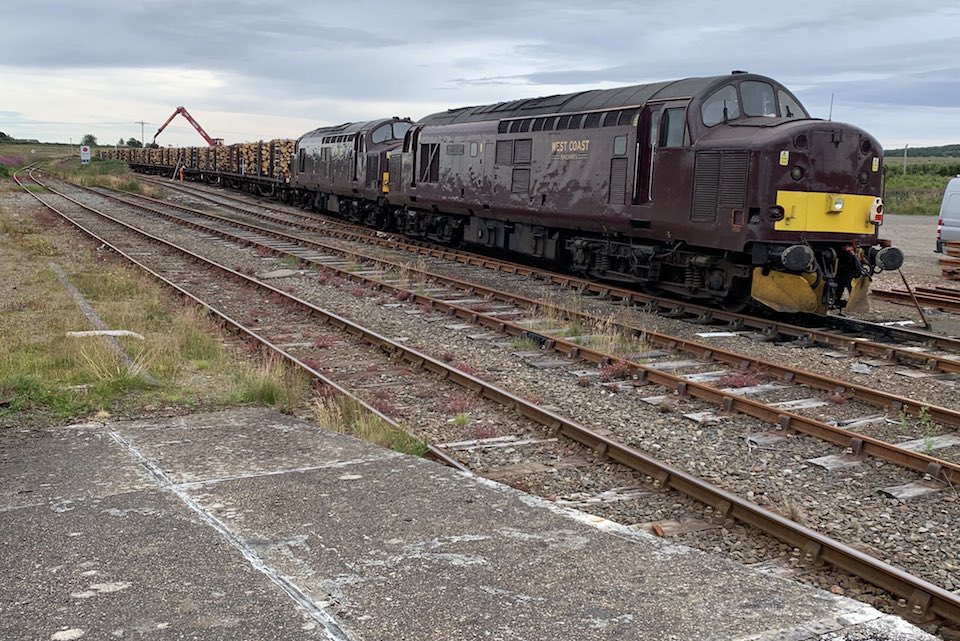Freight traffic may return in Scotland’s far north

Discussions are underway to examine the potential for general freight returning to the far north of Scotland. Interested parties have been discussing the possibility on the back of successful trials of timber movements by rail last year. General freight traffic – almost certainly intermodal – would help sustain the fragile economy of the Far North Line between Inverness and the isolated towns fo Wick and Thurso. The line currently has regular traffic from the decommissioned nuclear research facility at Dounreay.
If the challenges can be overcome, there could be more mixed freight traffic on the UK’s most remote railway route. The Far North Line, which connects tiny communities across the sparsely populated area north of Inverness, could see modest intermodal flows adding to the specialist traffic from the decommissioned nuclear facility on the north coast. The prospect was opened up after raw timber was transported from the small freight facility at Georgemas Junction, where the line splits to serve Wick and Thurso.
Modest mixed traffic
Last year, Victa Railfreight, a specialist freight train operator, received a grant of GBP 195,000 (approximately 220,000 euros) from Scottish government sources, to partly fund an operational trial to move approximately one thousand tonnes of raw timber per week from Georgemas Junction to a processing plant near Inverness. The trial was widely considered a success, and saw timber traffic return to the Scottish network for the first time in over ten years. Now, interested parties have discussed wider freight opportunities.

At present, the line carries a modest passenger service, and specialist freight originating from the decommissioned nuclear plant at Dounreay. The transport of nuclear waste is a contentious matter. The Dounreay Stakeholders Group (DSG), which represents interests in the area, has often discussed the traffic, the so-called nuclear flask trains operated by Nuclear Transport Services under their brand Direct Rail Services.
Restrictions await lifting
Loading facilities at Georgemas Junction, which were temporarily augmented to handle raw timber, could be adapted to load intermodal traffic. However, the operation would be time consuming and labour intensive. That was the conclusion of a meeting recently of the stakeholder group, which was addressed by NTS (formerly DRS) head Chris Connelly. The chair of the stakeholder group, Struan Mackie, told the meeting that both the regional chamber of commerce’s transport forum and the rail operator were examining the prospect. “It is something which needs further exploration. It is important to the community and business that we take advantage of it at a future date,” he told local media.
Back in March, Trudy Morris, who chairs the Caithness Chamber of Commerce, told a meeting of that body that an update had been received from Direct Rail Services that operational restrictions remain in place and DRS are waiting for more information from Scottish Government on what plans to lift these will look like, before they can look at a date for a more general trial. Ms Morris noted that the Forum would continue to keep in touch with DRS to progress this once possible.

The Far North of Scotland is designated one of Europe’s last great wildernesses. The area, about the size of Belgium but with a population the same as the town of Ypres, is served by two railway lines spreading out from Inverness. The line westwards, to the ferry port of Kyle served the more populous Western Isles and was a busy freight line for agricultural produce and seafood. The Far North Line has always been more marginal, but it was historically supported by military traffic, serving the naval base at Scapa Flow.
You just read one of our premium articles free of charge
Want full access? Take advantage of our exclusive offer





